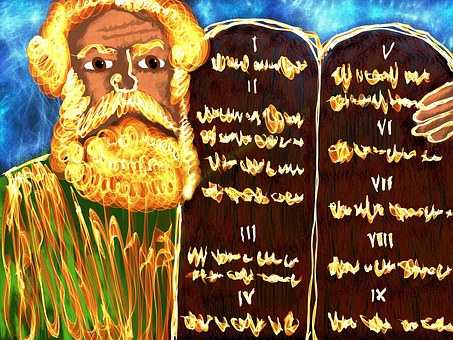Posted by Chester Morton / Wednesday, 20 January 2016 / No comments
Moses escapes to Midian
MOSES ESCAPES TO MIDIAN
The boy Moses grew into a nice healthy young man in the
palace of Pharaoh. One day, as Moses was going around the town, he saw an
Egyptian molesting a Jew. He looked around and when he thought no one was
looking, he killed the Egyptian and buried him in the soil.
The next day, when Moses was going around town again, he saw two Hebrew men fighting. He tried to separate them but the one who was at fault asked who made Moses a prince over them. He even asked whether Moses wanted to kill him the way he had killed the Egyptian the previous day. The revelation frightened Moses. Fearing that Pharaoh could hear and kill him, he fled into the land of the Midianites.

At Midian, Moses sat by a well. The Priest of Midian had seven daughters. The daughters came to the well to fetch water to feed their animals. Some men tried to intimidate the daughters but Moses intervened and saved them. Moses even fetched the water for the animals to drink. The girls left for home much early than usual. When their father inquired why, they told him about an Egyptian who saved them from the hands of some men. Their father asked them to go and bring the man, Moses so that he could give him food.
Moses came to the house and
became the herdsman to the Priest of Midian called Jethro. Moses was given one
of the daughters of Jethro, Zipporah, to marry. Zipporah bore Moses a child whom
he named, Geshon, meaning “I am a sojourner in a foreign land”.
SAMPLE QUESTIONS
1. Narrate the story of the escape of Moses from Egypt.
2. Give an account of the journey Moses made to the land of
the Midianites.
3. How did Moses come to live in Midian?
5. How did Moses get into the employment of Jethro?
6. What circumstances led to Jethro employing Moses?
7. Describe the events that led to Moses marrying Zipporah.
8. How did Moses become the son-in-law of his employer in Midian?
8. How did Moses become the son-in-law of his employer in Midian?
OBJECTIVE QUESTIONS ON MOSES
Test One
1. Moses was
keeping the flock of his father-in-law on Mount
A. Gilboa.
B. Horeb.
C. Nebo.
D. Carmel.
2. The
Hebrew midwives refused to kill male children because
A. the
Hebrew women prevented them from doing so.
B. they
feared God.
C. they were
of the same blood with the Hebrew women.
D. they had
pity on them.
3. “Who made
you a prince and a judge over us?” This statement by the two Hebrews to Moses
signifies the
A.
recognition of Moses’ divine authority by the Hebrews.
B.
recognition of Pharaoh’s authority by the Hebrews.
C. rejection
of Moses’ leadership by his people.
D. rejection
of Moses’ as an Egyptian.
4. When
Pharaoh’s daughter saw Moses in the basket she immediately
A. sent for
a nurse for him.
B. called
him Moses.
C. had pity
on him.
D. called
her maids.
5. Which of
the following officials were charged by Pharaoh to kill the Hebrew male
children?
A. Egyptian
physicians.
B. Egyptian
taskmasters.
C. Hebrew
midwives.
D. Hebrew
physicians.
6. Moses run
away from Egypt because he
A. did not want
to be brought up in Egyptian circles.
B. could no
longer the famine in the land.
C. heard a
divine call.
D. feared
that the news of his act of murder would reach the king
7. Aaron
accompanied Moses to Pharaoh because
A. Aaron was
a Levite.
B. Aaron was
bolder than Moses.
C. Moses was
deficient in speech.
D. Moses
wanted Aaron to be his witness before Pharaoh.
8. Moses
experienced the burning bush that was not consumed at
A. Horeb.
B. Bethel.
C. Nebo.
D. Meriba.
9. When
Moses brought the people of Israel out to meet God on Mount Sinai, the Mount
was wrapped in smoke because
A. God
kindled a fire on it.
B. the
Israelites set up fire round about the Mount.
C. the Lord
descended upon it with fire.
D. there was
an earthquake on the Mount.
10. Who among
the following did God direct Moses to appoint as his successor?
A. Caleb.
B. Aaron.
C. Eleazar.
D. Joshua.
Answers to the objective questions above>>
<<Back to Home Page
Go to other topics in Christian religious Studies>>
Go to the List of Subjects>>
Labels:
CHRISTIAN RELIGIOUS STUDIES
Related Posts

